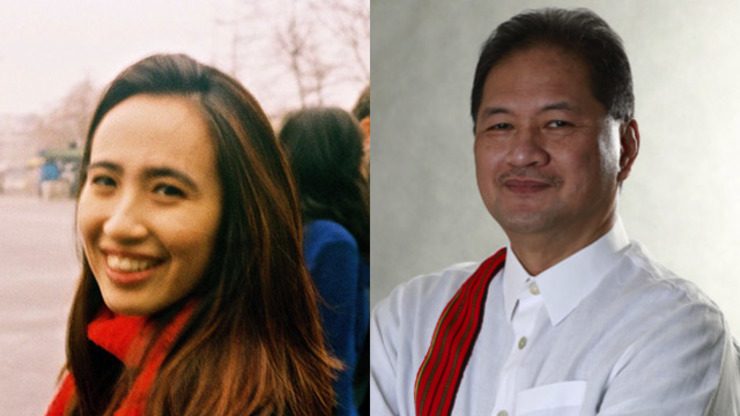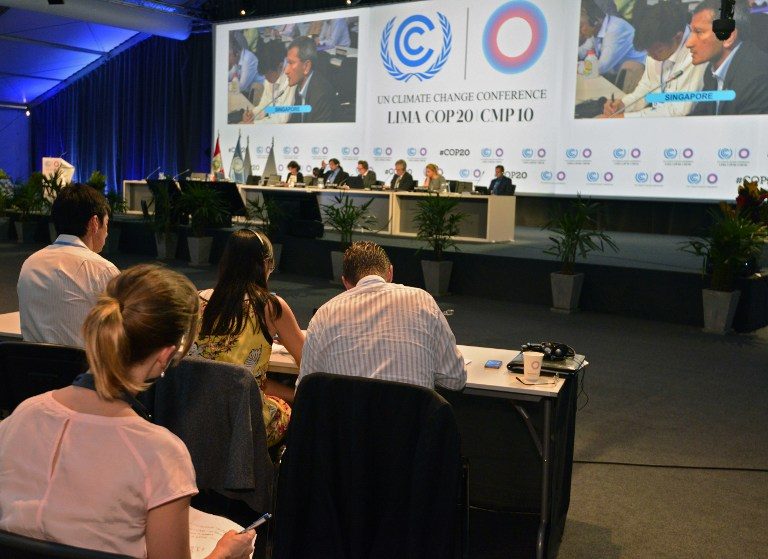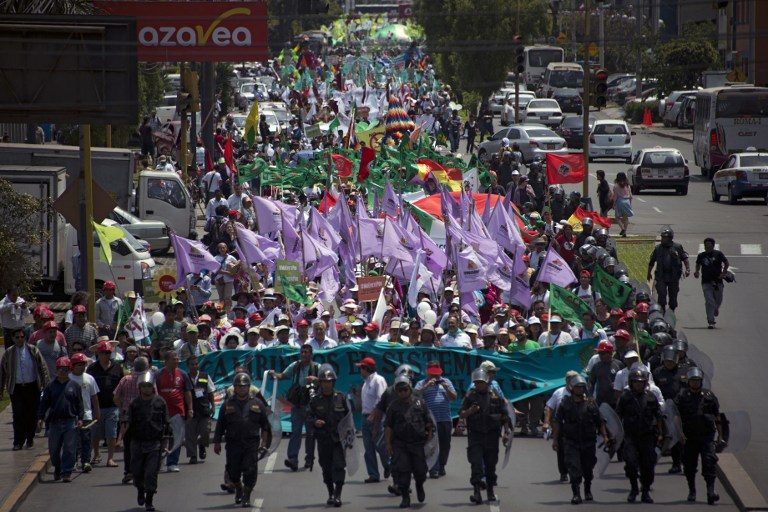SUMMARY
This is AI generated summarization, which may have errors. For context, always refer to the full article.

Last September, UN Secretary-General Ban Ki-moon invited world leaders to a climate summit in New York where they were met by hundreds of thousands of people marching on the city streets. Along with parallel marches in major cities all over the globe, they called for countries to act on the climate crisis at hand. In Lima, we faced the same call to action as thousands flew in from all corners of the world to continue working on the 2015 agreement.
After two weeks of rigorous and heated negotiations, parties to the United Nations Framework Convention on Climate Change (UNFCCC) decided on a core framework for the creation of an agreement in Paris in 2015. The decision was passed in plenary last December 14, an early Sunday morning, 31 hours after the conference was scheduled to end.
The second week of the 20th Conference of the Parties (COP20) of the UNFCCC in Lima, Peru opened with high tensions on December 8. The ministers were scheduled to arrive and give their statements throughout that week, and Typhoon Ruby (international name Hagupit) lashed onto the shores of the Philippines the preceding weekend, making it the third time that a catastrophic storm has passed through our country during the climate talks.
The typhoon set an urgent tone to the second week of the conference, and in that spirit, Monday saw civil society present in Lima stand in solidarity with the Filipino people as they demanded from the arriving ministers, especially those from developed countries, to do the same. To stand in solidarity in the Philippines is to stand with those who do not want the 2015 agreement to leave climate vulnerable countries with nothing but stronger disasters every year. This meant that the text should be founded on the principles of equity, and common but differentiated responsibilities and respective capabilities (CBDR+RC). The Filipinos who observed and covered the talks in Lima lead the hundred-strong crowd, representing the resilient and unyielding Filipino spirit that has gotten the country through the many calamities that have plagued it.
In Lima, we witnessed the negotiations firsthand. Dean Tony La Viña served as the main negotiator for the Ad-Hoc Working Group on the Durban Platform (ADP), as well as official spokesperson of the Philippine delegation. Mima Mendoza participated as a member of the Ateneo School of Government contingent.

At the opening of the joint high-level segment of COP20, Ban Ki-moon addressed the ministers and strongly asked that all countries have political will to be part of the solution. “Now is not a time for tinkering, but a time for transformation,” he said, and called for leaders to deliver on their promise of a balanced, well-structured, and coherent draft text to be negotiated in Paris next year. In this text, all the elements of the Convention should be present, especially an understanding on the scope and status of the intended nationally determined contributions (INDCs), as well as making sure that the climate finance regime is solidified. Combating climate change is an essential foundation of sustainable development and cannot be separated from development goals.
Typhoons ‘spoke on our behalf’
Various parties and blocs delivered their own statements. The European Union, whose presidency is held by Italy this term, enumerated their three desired deliverables for Lima: 1) an advanced and balanced draft text for adoption in Paris next year; 2) clarity on the information on INDCs for transparency and further comprehension; and 3) an agreement on how parties can continue to work together to enhance mitigation efforts before 2020. Many other ministers echoed these general sentiments throughout the high-level segment.
The statement of the United States, delivered by Special Envoy for Climate Change Todd Stern, reiterated the US commitment to the process and once again enumerated the country’s pledges, which President Obama originally delivered in the climate summit. He ended his statement by saying that in Lima, parties must focus on how much is at stake and to “not lose the forest for the trees.”
President Evo Morales of Bolivia, a popular figure in Latin America, delivered a resolute 35-minute address that lambasted capitalism and implied that some countries in the process were “thieves and liars.” He urged parties to create a climate agreement that is based on the protection of life and Mother Earth, and not on the market.
In light of Typhoon Ruby, he reminded the conference that despite the fact that developing countries have very little historical responsibility with regard to climate change, they suffer the most. It is imperative therefore that the new agreement must fully respect the principles, provisions and objectives of the Convention, in particular equity and CBDR+RC. The global community must come together to create this deal, for the “environment is a shared wealth and should be managed in a collective fashion.”
Vice Chair Lucille Sering of the Climate Change Commission delivered a concise and powerful statement for the Philippines, stating that should this process fail, it will not only symbolize the failure of diplomacy but show the complete disregard for human rights. “Our typhoons have already spoken on our behalf,” she said, so it is now time for world leaders to provide a clear and substantive text that is morally grounded and will avoid the catastrophic consequences of climate change.
‘Save Tuvalu, save the world’
But perhaps it was Tuvalu, represented by Prime Minister Enele Sopoaga, that gave the most passionate and poignant statement. As the Polynesian country is made up of small low-lying islands on the Pacific Ocean, climate change is the “single greatest threat” to its existence.
Sopoaga gave a compelling opening statement, declaring that no other country leader in the world has ever asked this question: “Will we survive or will we disappear?” He was referring to studies indicating that sea level rise could make Tuvalu uninhabitable within the century. Should there be a less-than-desirable agreement, he stated plainly that his country cannot suffer the humiliation of accepting a half-hearted response to the climate crisis. He ended by saying: “If we save Tuvalu, we save the world.”
The message from New York to Lima is the same at its core – there must be decisive and ambitious action in order to produce a robust and balanced agreement. There was frustration from both delegates and civil society during the last few days of negotiations. Drafting of the decision text went agonizingly slow, and there seemed to be no consensus and no willingness to compromise among parties. At one point, the draft decision reached 52 pages from the original 18.
On Friday, December 12, the text was reduced to 7 pages. On behalf of developing countries, the Group of 77 and China (G77+China) registered their extreme disappointment at the text – there were no mentions of CBDR and loss damage, as well as only a vague inclusion of adaptation. While developed countries were happy with the draft decision, it was clear that the conference would go on overtime as the majority of developing countries rejected the text. As it has happened in so many negotiations before, COP was once again at a deadlock.
At this point, ministers had already left the country, but negotiators stood firm on the ground that the ministerial statements had established. At the final few days of the talks, it was even more essential to return to the foundation that the Convention is built on – the principles of equity, historical responsibility, and CBDR. Only if the 2015 agreement is grounded on these principles will it be fair, balanced, and have the greatest chance of solving the climate crisis. The ministers, especially those from developing countries and small island states, made forceful mentions of CBDR and equity, and negotiators were firm on their explicit inclusion in the draft decision. Along with loss and damage, this was a clear non-negotiable on the part of the developing countries.

In the final days of the Lima conference, the Philippine delegation took a middle ground. Earlier, we had pivoted and called for all countries to reduce emissions. We had decided that our main alliance was going to be with the most vulnerable countries, with Secretary Sering accepting the position of Chair, on behalf of the Philippines, of the Climate Vulnerability Forum.
A decision was also made to use human rights as a framework that would guide our positions. This was misinterpreted to mean abandonment of CBDR and equity. Far from it, as a human rights approach is the logical extension of those key principles and more importantly provide an opening for non-state actors to participate formally in the climate change decision-making process. In the future, however, the challenge before our negotiators would be how to strike up the right alliances with other countries so we have more influence on the negotiations. The government must identify credible and skilled lead negotiators that will steer us to a position of influence.
The COP Presidency was resolute in the face of the diversity of views. Peru’s Environmental Minister Manuel Pulgar-Vidal, President of the Conference, was instrumental in making the decision happen. After last minute consultations and tight compromises, the plenary adopted the final five-page text, the “Lima Call for Climate Action”, a little past one o’clock in the morning on Sunday, December 14.
Pope a silent mover
Parties expressed their satisfaction at the outcome, confident that they were returning to their countries with something that could move them forward into the Paris negotiations next year. The value of the Lima outcome is that it guides countries properly on what to do next as the negotiations accelerates in the next few months. In particular, we know what every country must include in its “INDCs”.
A silent, and perhaps key mover during the final days of the Lima negotiations was perhaps Pope Francis himself. Also a head of state, the religious leader sent a strong message to the COP20 President, urging nations to come together to find a global solution to the climate change problem. With strong words, the Pope underlined that there is a “clear, definitive and urgent ethical imperative to act,” and that the fight against global warming will only achieve success through “collective response that will be able to overcome mistrust and promote a culture of solidarity, encounter, and dialogue.” He is also scheduled to produce a climate change encyclical to inspire the negotiations in Paris this year.
His Philippine visit next week, especially his trip to Tacloban, will almost certainly include words on climate change and how its effects further marginalize the poor. Pope Francis’ formidable involvement in the climate change movement will increase the possibility of having a better outcome for the Paris negotiations this December.
Like previous COPs, the Lima conference proved to be another exercise of endurance, patience, and perseverance. From New York to Lima to Paris, it will still be a long and hard road leading up to next year’s talks, but, if what happened last month is any indication, along with recent events and declarations from influential people like Pope Francis, there is hope that parties will come together to deliver on their promise of a good climate agreement. – Rappler.com
Dean Tony La Viña was an adviser of the Philippine delegation to the Lima climate change conference. Mima Mendoza is a research associate at the Ateneo School of Government and represented the school at the Lima conference.
Add a comment
How does this make you feel?
There are no comments yet. Add your comment to start the conversation.